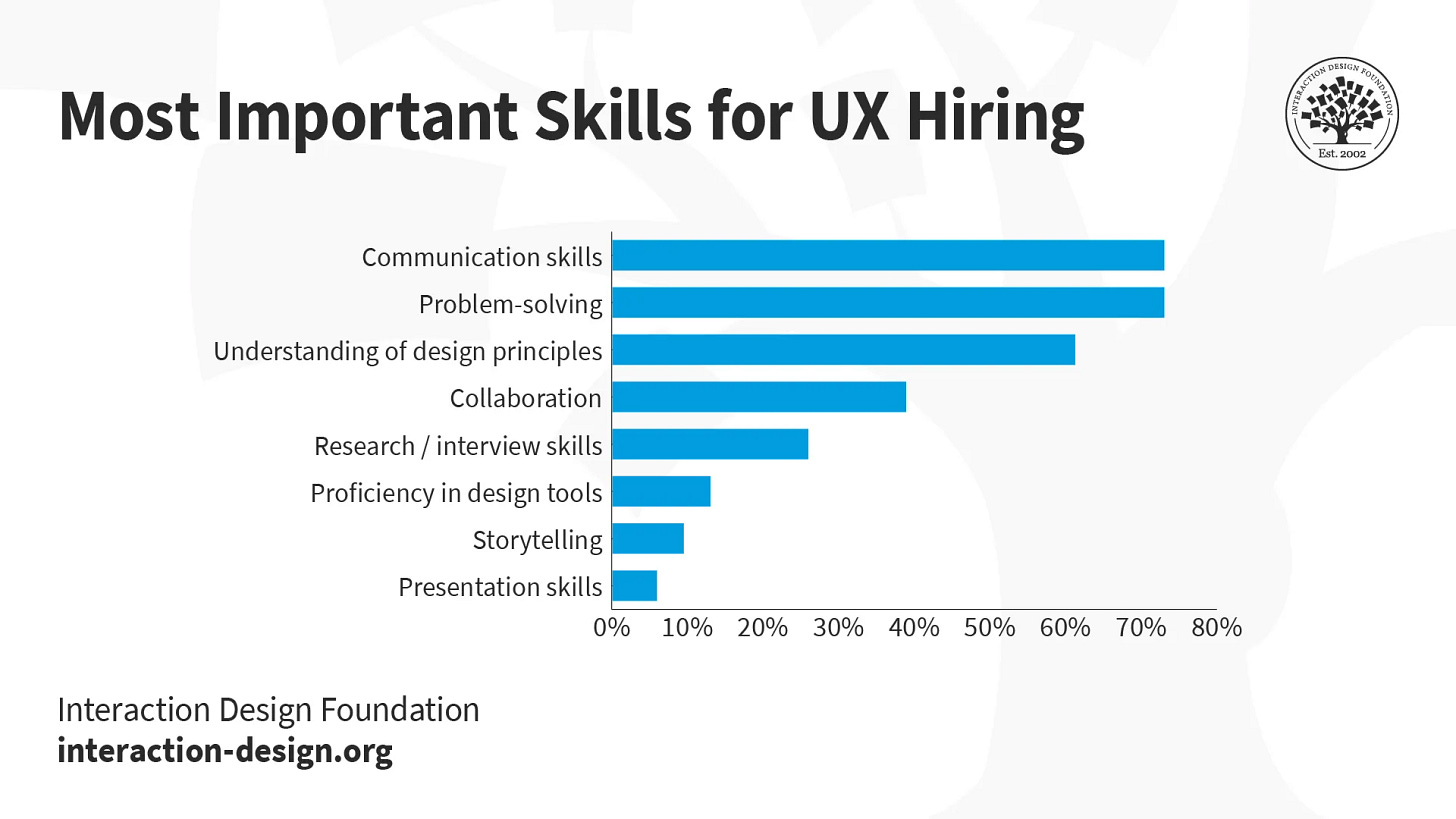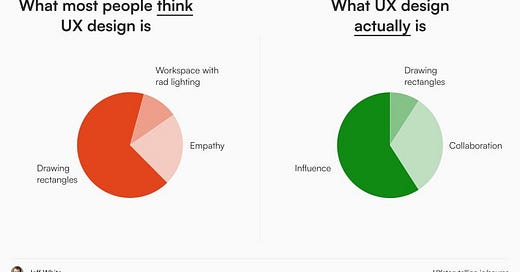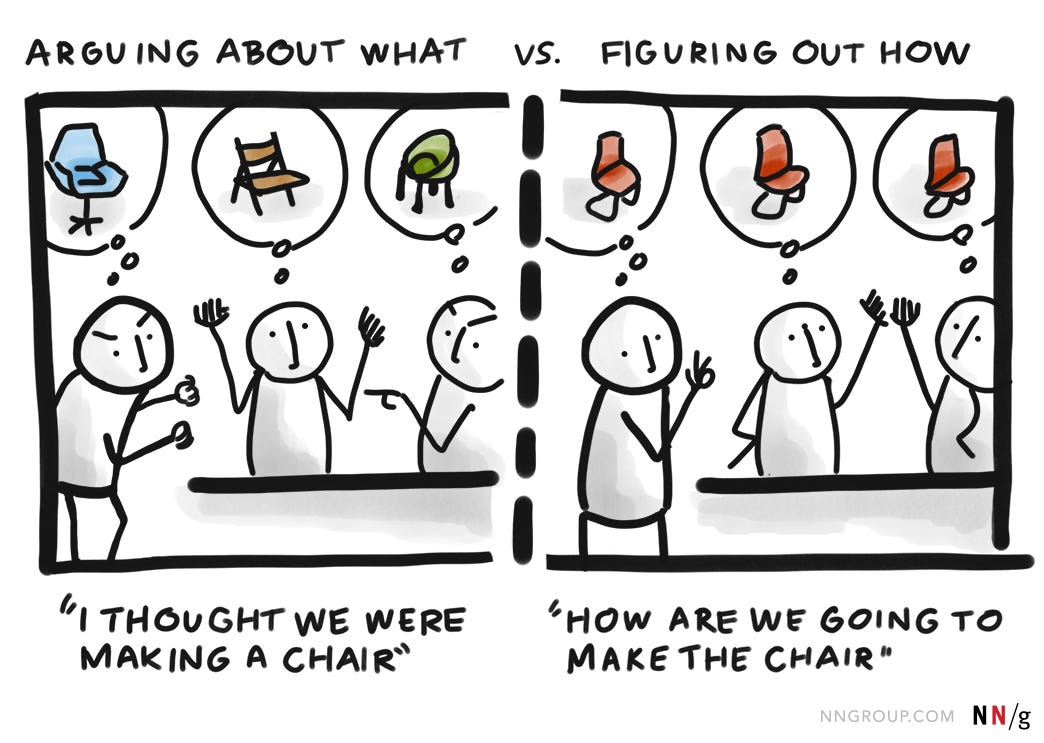One of the Easiest Ways to Improve as a Designer is to Get Better at Writing
How to get started improving your written communication as a designer
Soft skills are a barrier that prevents many designers from advancing their careers.
At a certain point, usually when you advance to Senior Designer or Manager roles, you realize that it’s not all about the Visuals. It’s about communicating your ideas to others and influencing them to make the right decision.

After all, it doesn’t matter how well-designed a solution is if your stakeholders don’t want to use and build it. What’s more, being able to communicate your process, value, and workflow is a critical skill that often determines whether you get hired.

However, there isn’t just one form of communication. There are three: Written, Verbal, and Visual Communication. Moreover, the easiest way for 99% of you to improve is to focus on Written Communication.
Here’s Why.
The Three forms of Communication and Influence without authority
To summarize, here’s a brief overview of the three communication types:
1. Written Communication: Can we agree on and document what we’re building?
2. Visual Communication: Can we visually demonstrate why a specific option or change is necessary?
3. Verbal Communication: Can we influence decision-makers to make the right decisions?
The reason that we need each of these communication types is because we need to “influence without authority”.
What every designer eventually discovers is that your bosses aren’t always right. You might gather feedback directly from your users that they dismiss due to personal biases. Or the Business might think a feature is essential, but your users don’t care about it.
The problem is that most designers hold low-to mid-level positions in the overall organization. We’re not executives or superstars, so we can’t demand that the rest of the team follow our orders.
Instead, we need to influence specific decision-makers to listen to us and follow our recommendations to get things done. This is why every designer needs to improve their communication skills.
However, what you might not expect is that, by far, written communication is the easiest and best way to improve. This is for a few reasons:
We’re already decent at visual communication: Going from intermediate to advanced Visual Communication requires more effort than going from Beginner to Intermediate
Verbal Communication is a hard skill to master: Public speaking is the #1 fear for most adults. Learning this requires a lot of time and effort, especially for introverts.
Most designers are bad at written communication: I’ll discuss this below.
Businesses are cautious about putting things in writing: Learning Written Communication also covers your ass.
Many designers are bad at brief written communication
There are two key reasons to get better at written communication. First, writing is one of the easiest ways for designers to influence businesses, stakeholders, and other people who might be pushy extroverts because it leaves a paper trail.
Everyone is happy to voice their opinions in meetings, but when it comes time to write down decisions and action items, people suddenly become more cautious. If the project fails and people look into it, their name is on many decisions made.
So, at the very least, written communication gets your team to slow down.
The other reason is you may not have as clear an idea of why you’re doing something as you might realize.
What you’re thinking makes sense in your head may not make sense when you try to communicate with others.
You’ve probably noticed this trend when you first tried to write up a design portfolio piece. You might have months or years of experience working on something, but you’re unsure what to communicate to recruiters and interviewers.
So, most designers will write too much, specifically about their design process, because that’s what they learned in school (or BootCamp). But that sort of writing gets you an “A” in class: it doesn’t get you hired.
Interviewers don’t have context about all your work, so you either end up boring people by over-explaining context or confusing them about what you did.
However, writing helps you:
Clarify your thoughts about a particular decisions
Allows others to understand your reasoning very easily
Document project requirements and user feedback.
Create compelling case studies for your portfolio.
Getting started with practicing written communication is easier than you think as well. To improve written communication (and your design portfolio), you only need to take a portfolio piece and ask: Why-What-How?





